FOUR TYPES OF MUSHROOMS FOR FUNGIFRIDAY
Good evening everyone, hopefully every daily activity that we do is always blessed by the almighty. On this occasion, I would like to share some pictures of mushrooms with different types that I photographed myself in the area of my home page.
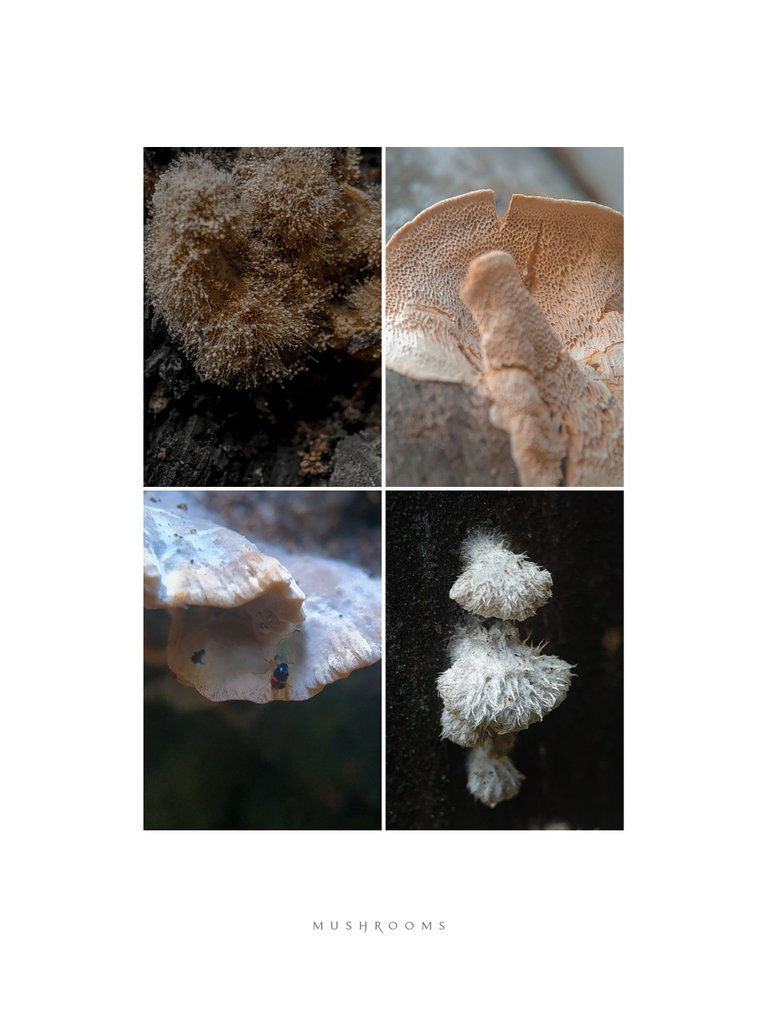
So, one afternoon I looked around the yard after doing activities as usual, then I found some mushrooms among the fences, dead coconut trees and areca nut trees and one other type I found in the plantation area.
As for all these mushroom pictures, I took a photo with a Xioami redmi note 5 smart phone using a macro lens and I edited it using the lightroom mobile apk. So, here are some pictures of mushrooms that I took :
1. Brefeldia Maxima.
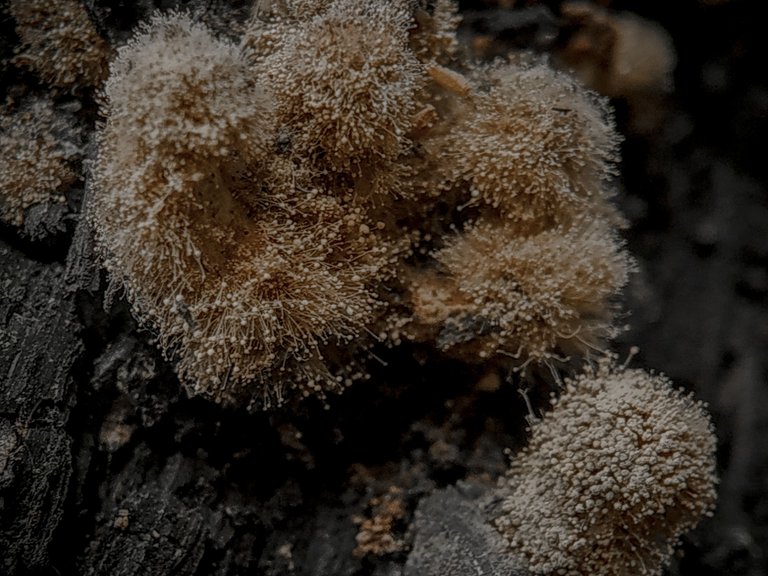
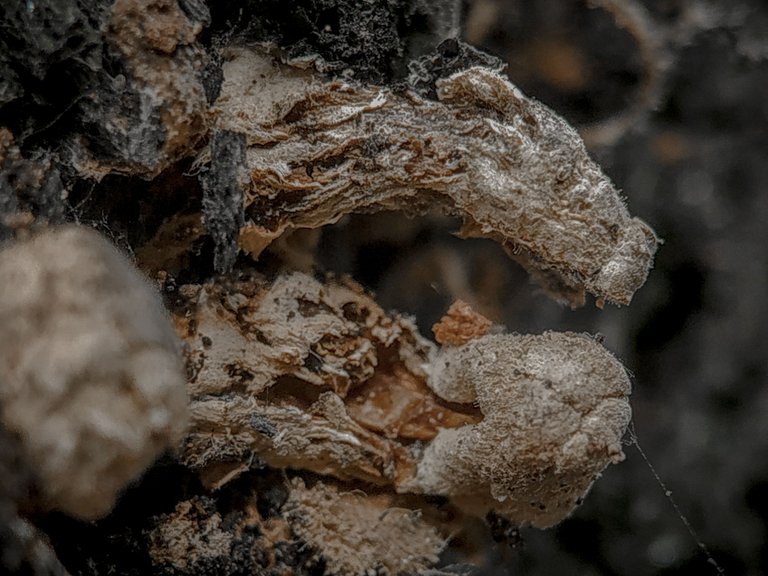
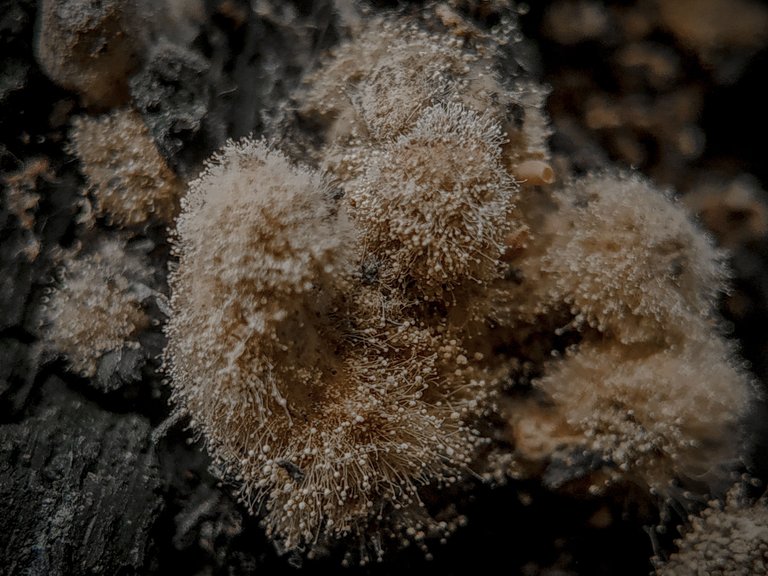
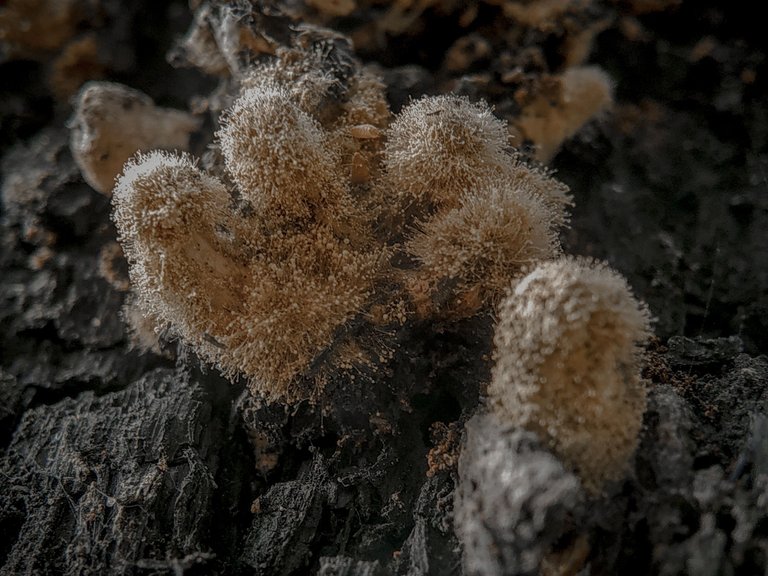

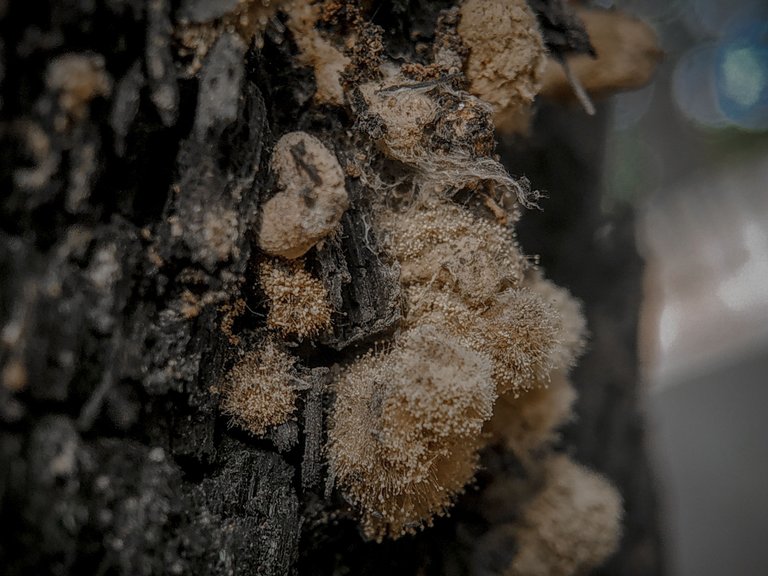

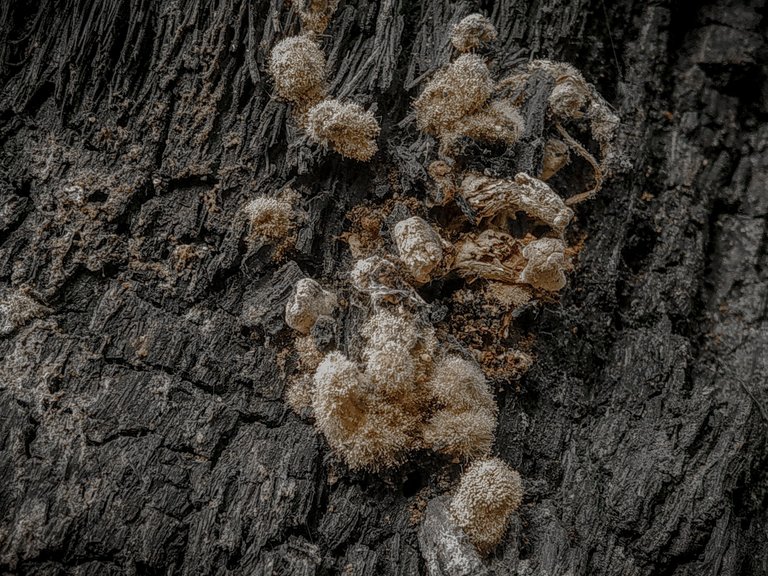
According to Wikipedia, this fungus is a non-parasitic species of plasmodial slime mold, and a member of the class Myxomycetes. This mushroom is commonly known as tapioca slime mold because of its pure white appearance and characteristically like tapioca pudding. A common species with a worldwide distribution, particularly in North America and Europe. It is often found on the bark after heavy rains or excessive watering.
This is the mushroom that I photographed which is located on a dead coconut tree in the yard of the house, but what is shown in the picture may be different from the wikipedia explanation in terms of the color it says is white but in the picture it is yellow, I think this is because this dead coconut tree was burned by my mother to remove it because I don't know what to use it for.
The shape of this mushroom is round, elongated and spiny.
2. Tyromyces
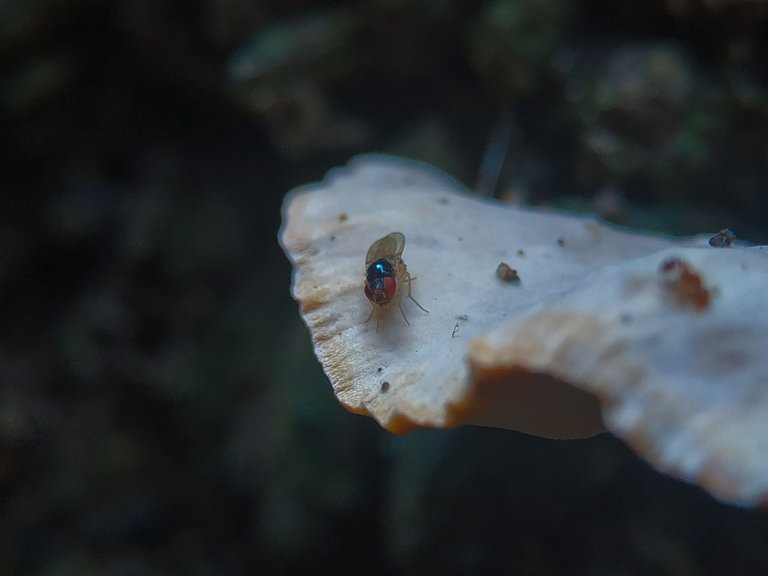
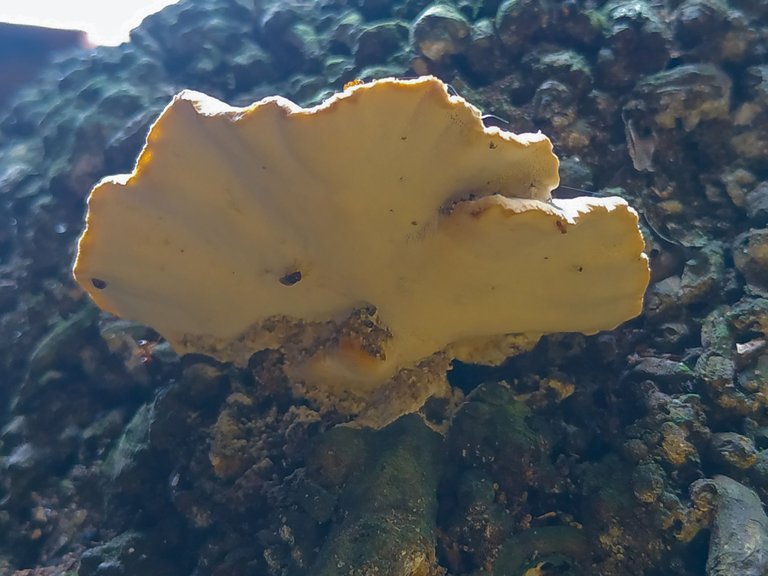
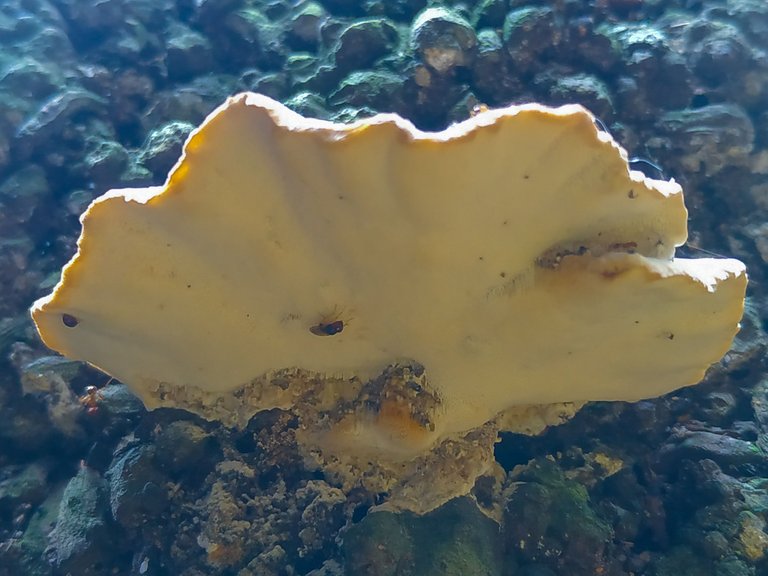

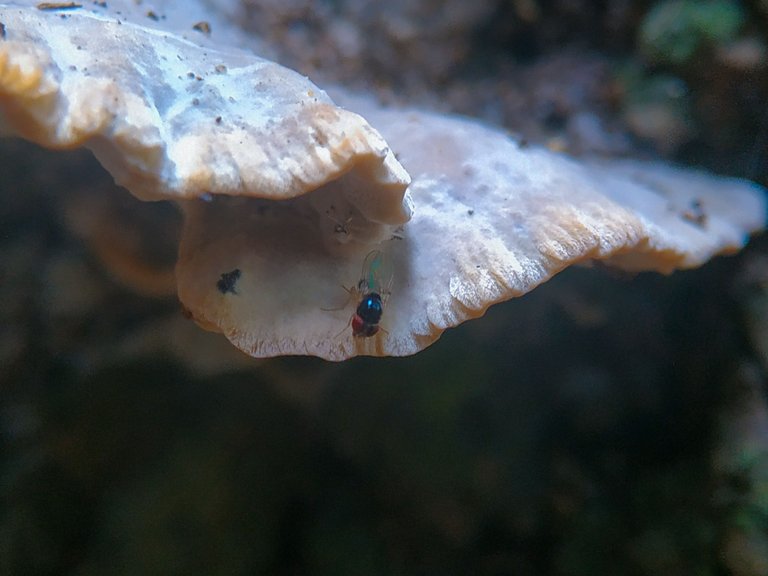
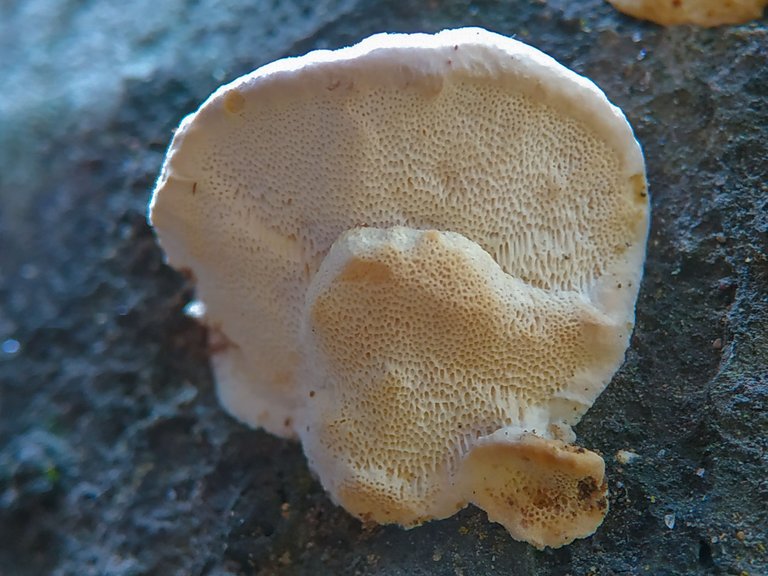
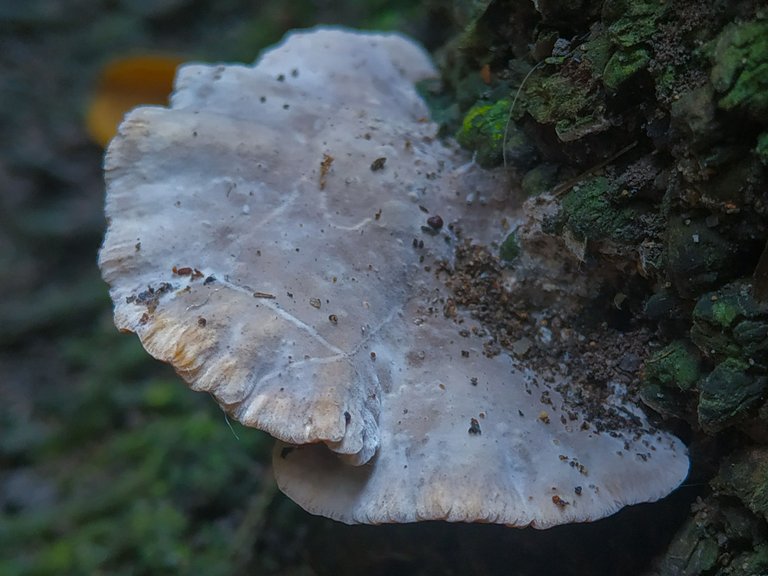

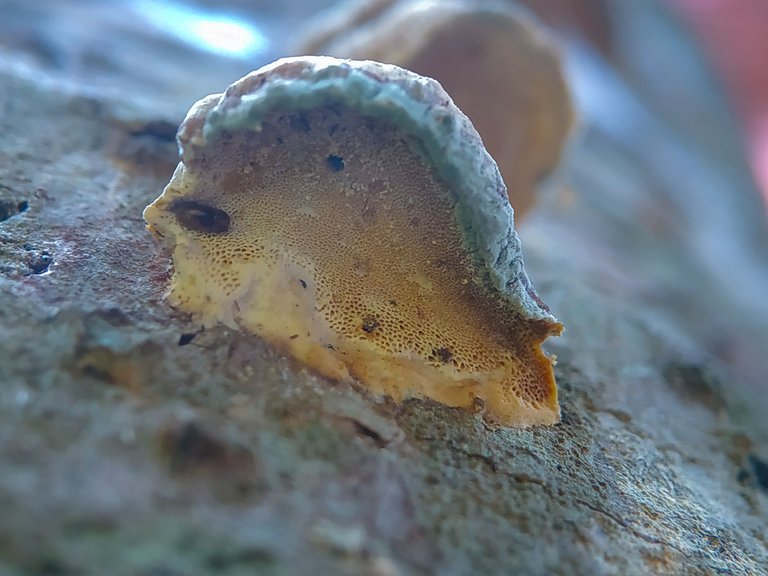
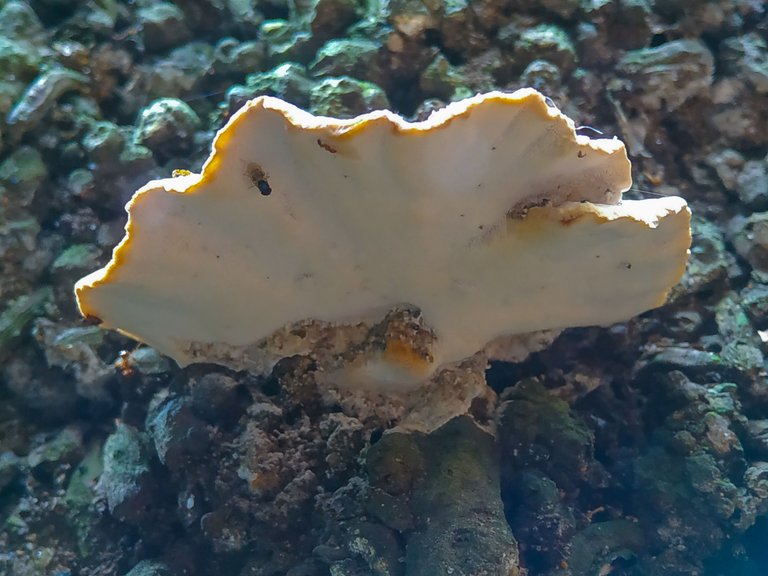
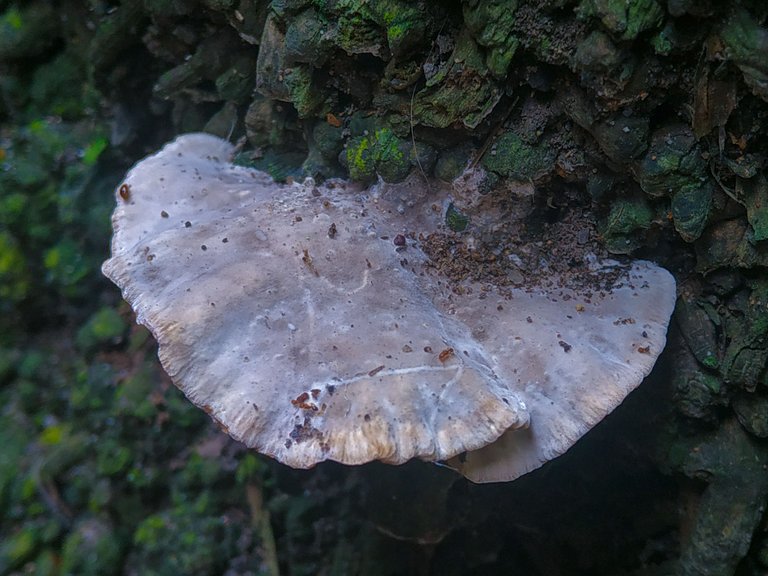
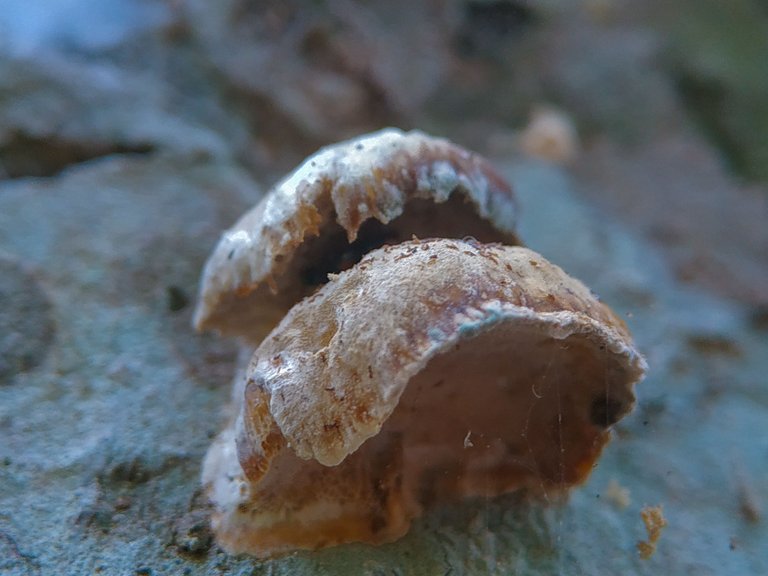
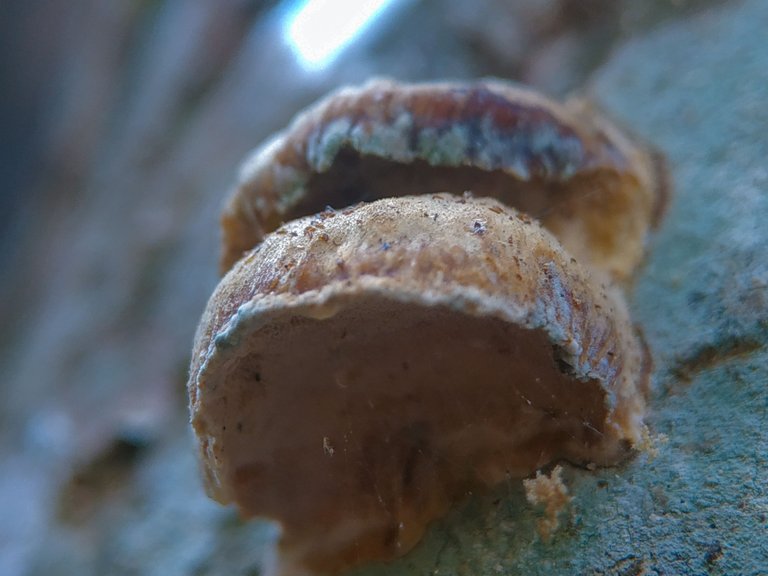
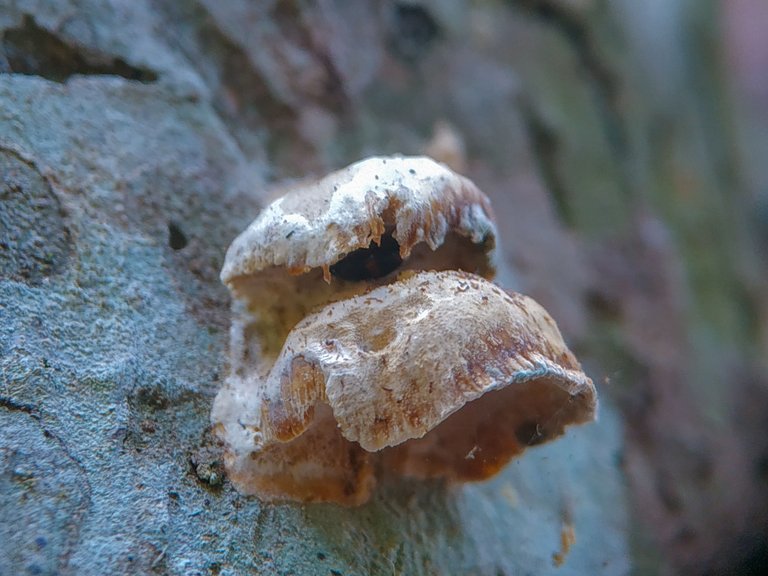
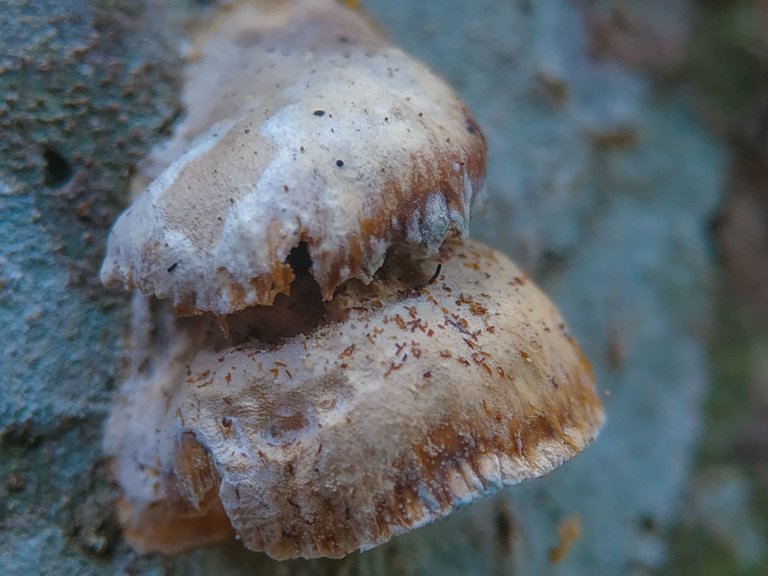
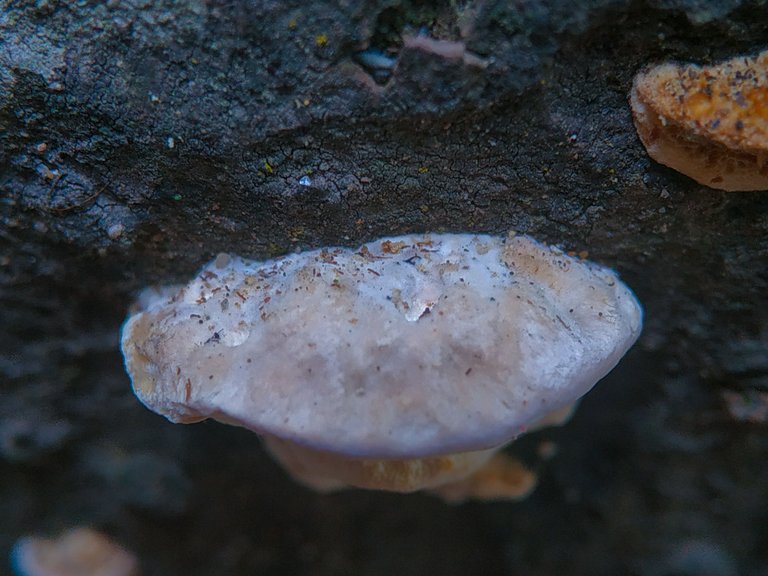
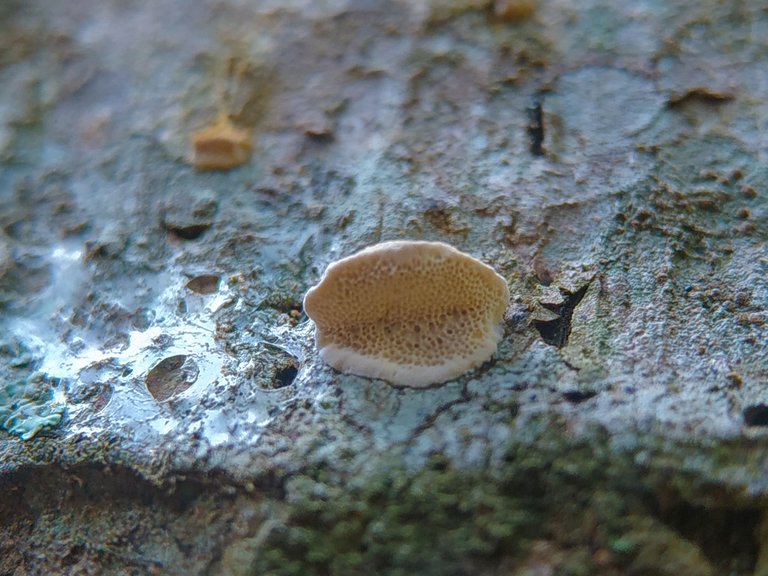

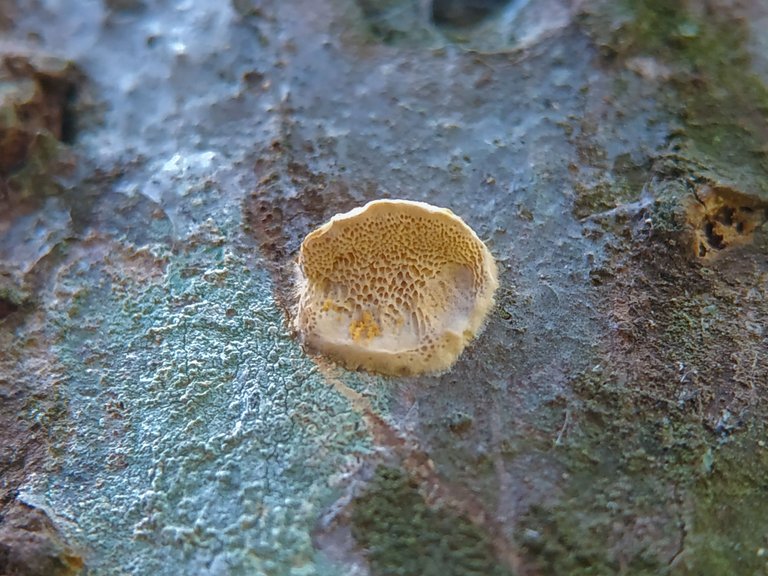
According to Wikipedia's description this fungus is a genus of poroid fungi in the family Polyporaceae, curtailed by the mycologist Petter Karsten in 1881. The species type is the widespread Tyromyces Chioneus, commonly known as white cheese polypore. The phylogenetic position of Tyromyces within Polyporales is uncertain, but does not appear to belong to the nucleated Polyporoid Clade. Tyromyces is Polyphyletic as it is currently circumscribed, and has been described as a dumping ground for monomite white rot species with thin-walled spores.
This mushroom that I photographed is located on the trunk of a betel nut behind my house. The shape of this mushroom is curved downwards with its position like a milky white half umbrella, on the top side it is smooth in texture and on the bottom side it has a hollow texture.
3. Perenniporia
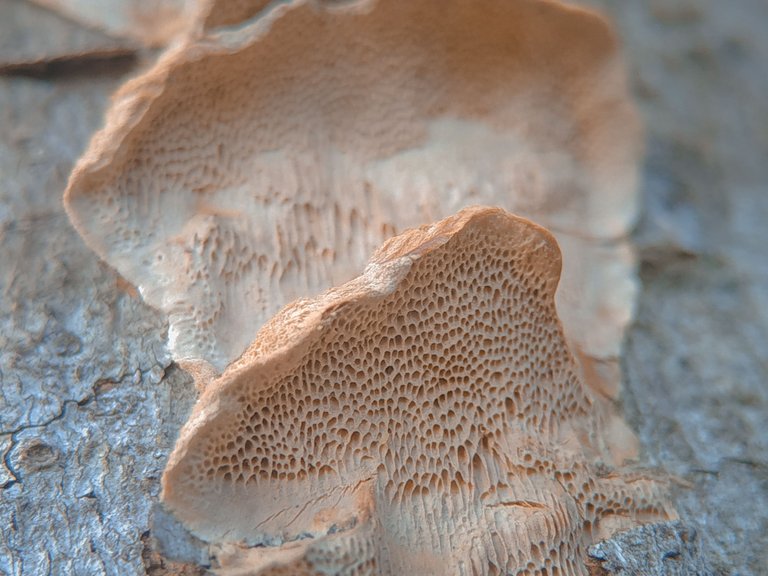
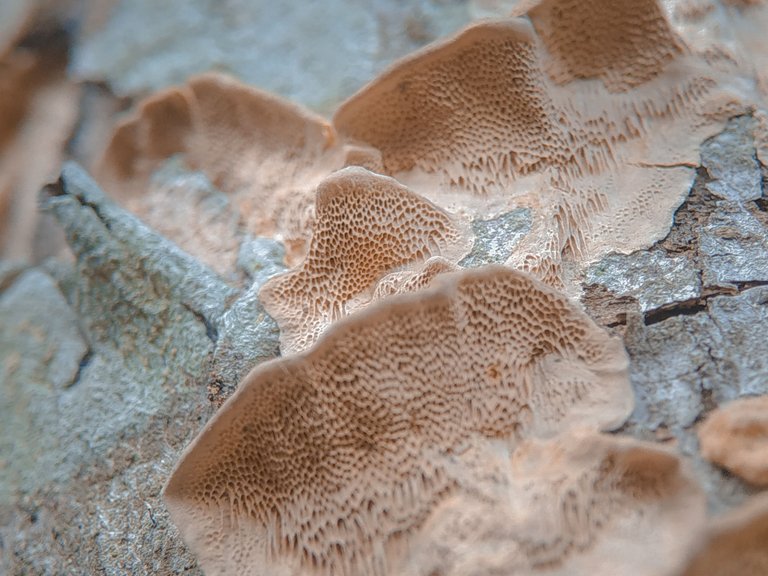
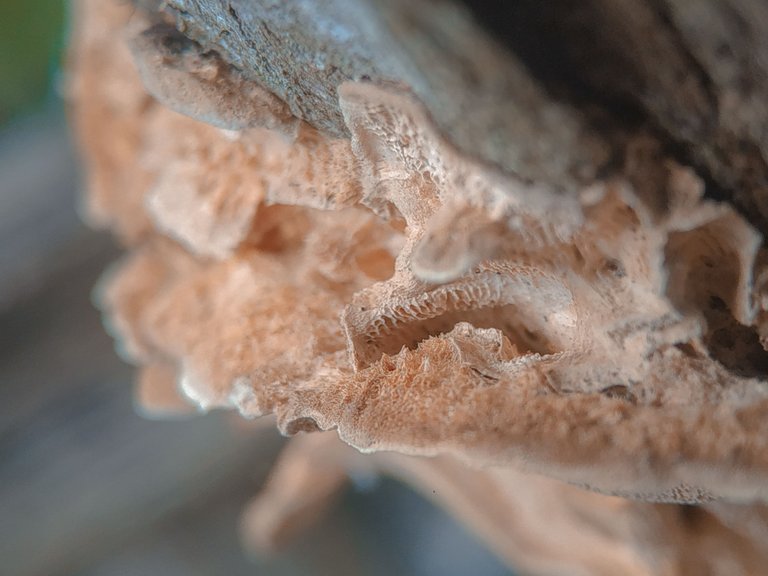
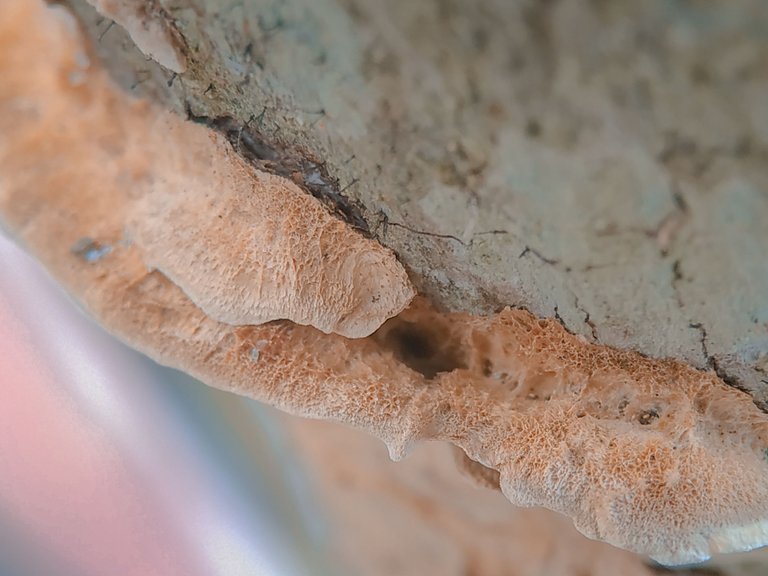
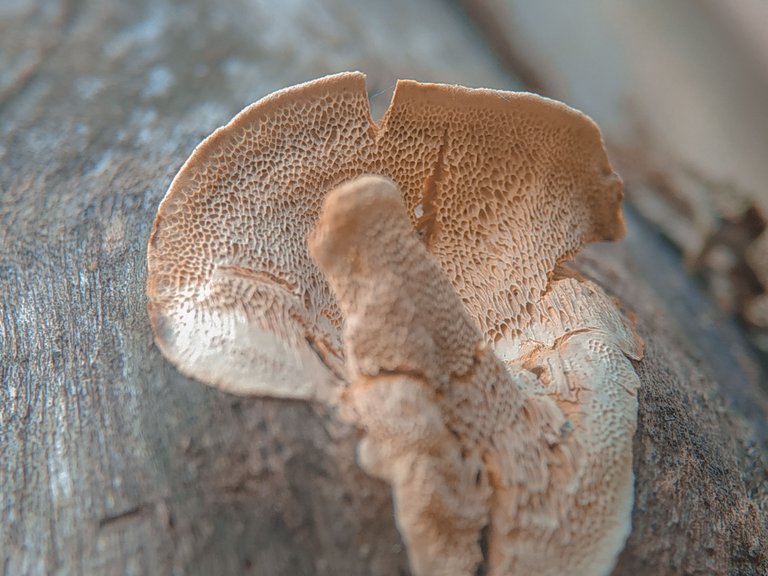
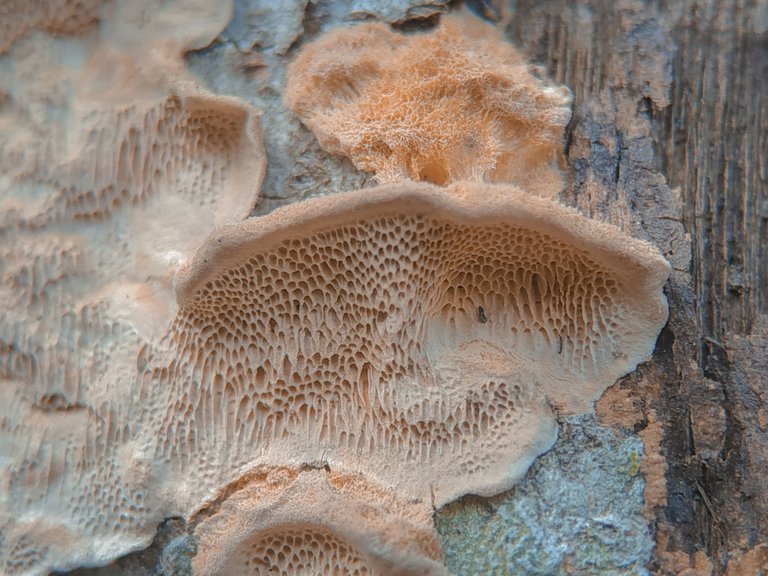
Based on the explanation on Wikipedia this fungus is a Cosmopolitan genus of bracket-forming or crust-forming Polyporaceae in the Polyporaceae family. They are Dimitic or Trimitic with fine, thick-walled Basidiospores and cause white rot on wood exposed to moisture.
This is a mushroom that I photographed on the wooden fence of the front of the house with variations in its shape, there are large, small with a curved downward position, hard texture and brownish white in color.
4. Commune of Schizophyllum
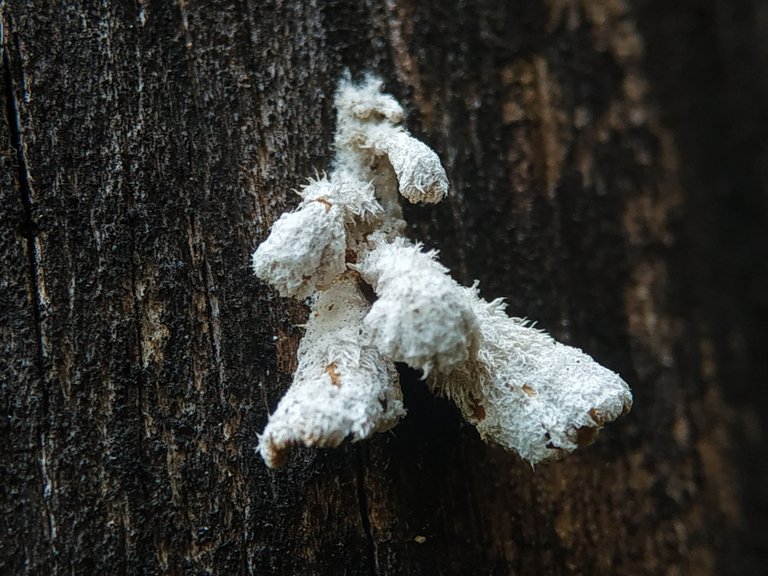

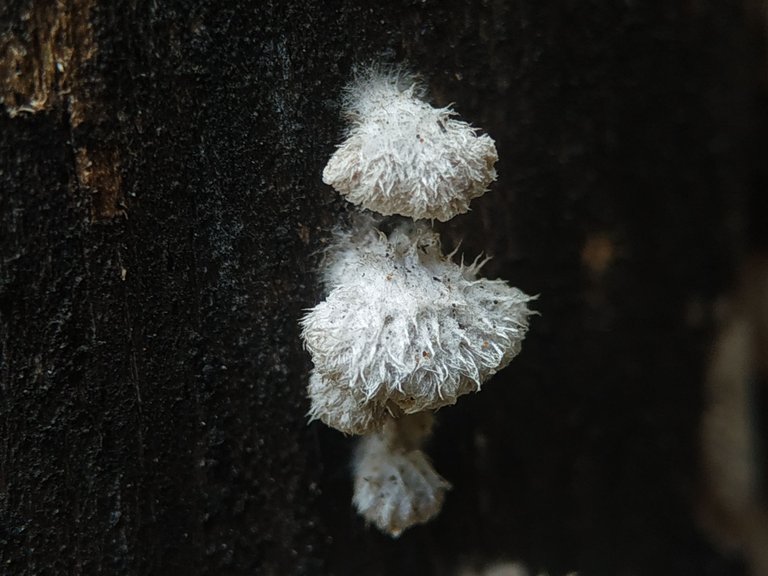
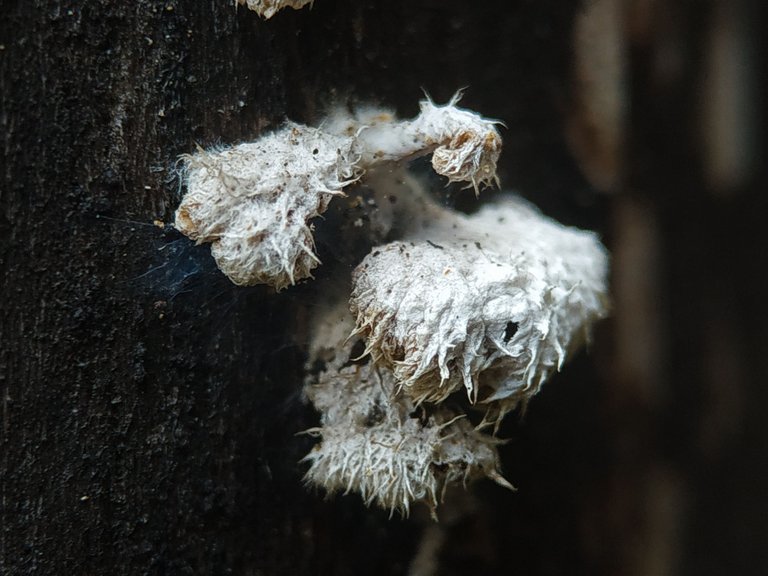
According to Wikipedia, this mushroom is a species of fungus in the genus Schizophyllum. This mushroom resembles a dense wavy wave or a Chinese fan. Gillies or split gills vary from creamy yellow to pale white. The cap is small, 1-4 centimeters ( 3 8– 1+Width 5 8 in) with a dense but spongy body texture. This fungus is known as split gill mushroom because of its unique nature, the gills are completely longitudinal at the bottom. This fungus is found all over the world.
I found this fungus on the wooden fence of the fence as well, and this fungus can be consumed by humans.
Well, so this is a little additional knowledge from me for all of us, hopefully it will be useful, of course, I apologize if there are errors in writing or something like that, I thank you very much and see you on the opportunity in the future.
| Camera | Xiaomi redmi note 5 |
|---|---|
| Help tool | Macro lens |
| Objects | Fungi |
| Location | Aceh-Indonesia |
| Photography | @ghosthyper29 |
Congratulations @ghosthyper29! You have completed the following achievement on the Hive blockchain and have been rewarded with new badge(s):
Your next target is to reach 500 upvotes.
Your next target is to reach 50 replies.
You can view your badges on your board and compare yourself to others in the Ranking
If you no longer want to receive notifications, reply to this comment with the word
STOPSupport the HiveBuzz project. Vote for our proposal!
hello dear friend @ghosthyper29 good afternoon
How beautiful the four varieties of fungus that you have found, I appreciate that you let us know their name and the qualities of each one
I take this opportunity to wish you a splendid afternoon
Thankyou very much sir
Thank you very much and really appreciate
Yay! 🤗
Your content has been boosted with Ecency Points, by @ghosthyper29.
Use Ecency daily to boost your growth on platform!
Support Ecency
Vote for new Proposal
Delegate HP and earn more